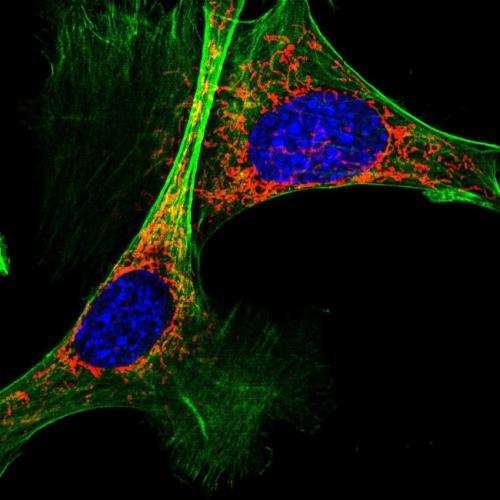Deciphered the process through which cells optimize metabolism to burn sugars or fats

In the latest edition of Cell Metabolism, CNIC scientists describe the process by which cells optimize and regulate their capacity to use sugars or fats as fuel sources. As lead author José Antonio Enríquez explains, 'the real digestion of foods takes place in all the cells of the body.' While some cells preferentially consume sugars, others feed mostly on fats, and others can switch from one nutrient to another.
To guarantee efficient use of nutrients, cells have systems that permit them to capture and transport the available nutrient molecules to their interior. But if several nutrients are available, cells can select those that are of most interest and discard undesired molecules.
Inside cells, nutrients are conducted to the mitochondria, the specialized cell organelles in which nutrients are combusted to release the energy held in their chemical bonds. Both sugars (glucose) and fats (fatty acids) are 'burned' in mitochondria, but these organelles need to adjust their molecular apparatus in different ways depending on whether their main fuel supply comes from sugars or fats. According to Dr. Enríquez, "This adjustment can be likened to refitting your boiler to burn natural gas or butane."
The proportion of different food fuels available to cells can be affected by diet, exercise, or a period of fasting, and cells need to be able to adapt to these changes. In some specific situations, for example during the activation of immune cells to defend the body against infection, cells change their activity even if the fuel source is unaltered, and this can be accompanied by changes in the preferential use of glucose instead of fatty acids or vice versa.
In all these cases, mitochondria need to adapt their 'fuel burners', technically known as the electron transport chain (ETC). "The ETC was known to adapt, but the signals that promote this change and the molecules responsible for it were not known."
The Cell Metabolism article describes the signals and molecules that regulate this adaptation. Combustion of nutrient fuels in mitochondria requires oxygen, and the process produces, in addition to energy, water (H2O) and carbon dioxide (CO2). But when the ETC switches from burning sugars to fatty acids, it is at first not adjusted to burning the new fuel, and additional oxygen derivatives are produced called reactive oxygen species (ROS), among them hydrogen peroxide (H2O2).
Production of H2O2 activates a molecular sensor called Fgr (Fgr-tyrosine kinase), which raises the alarm that the ETC is not adjusted to burn the fatty acids arriving in the mitochondria. It does this by modifying one of the components of the ETC, adding a phosphate group that makes it more active. This triggers a change in the organization of the ETC so that burns fatty acids more efficiently. The modification, called phosphorylation, is reversible, and the CNIC team believes that another, as-yet-unidentified molecule must trigger the reverse modification (dephosphorylation) when the mitochondrion's fuel burners need to switch back to burning glucose.
The study published in Cell Metabolism demonstrates the importance of this mechanism in the adaptation of cells to fasting and a limited oxygen supply (ischemia), and in the activation of cells of the immune system.
















